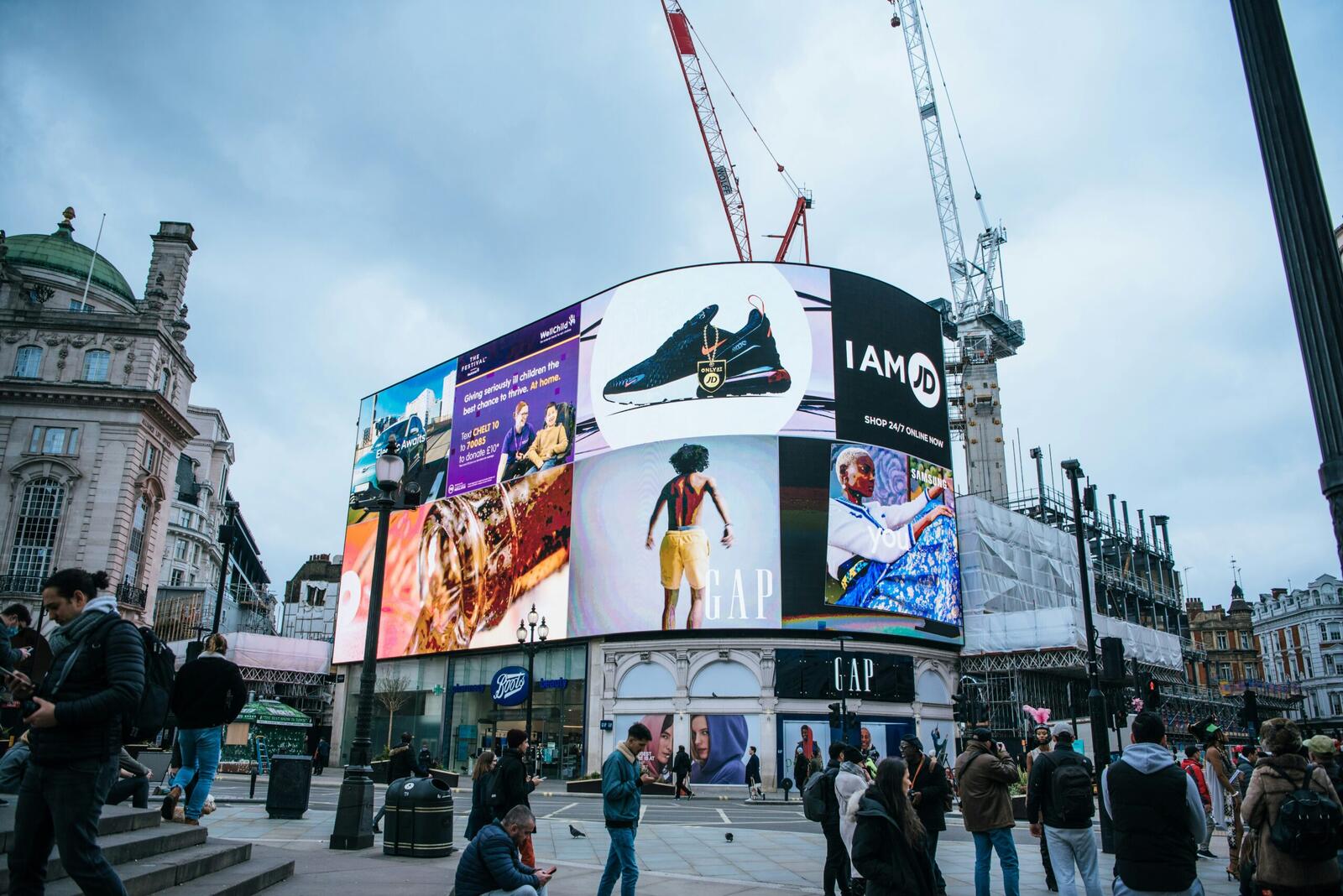Meta will now have full automation in advertising. The Wall Street Journal reports that the company wants its artificial intelligence to build and place every Facebook and Instagram advert before the end of next year.
The plan covers creative work, delivery and budget control. Mark Zuckerberg told shareholders that brands will set a budget and a goal, and the software will handle the rest.
At present, the platform already tweaks pictures and captions, but this upgrade turns the system into a complete production line.
How Will The Tool Work In Practice?
Advertisers will give a product image and decide how much they can spend. According to Reuters, Meta’s system will then draft text, design video scenes and pick the right audience for each format.
The software also adjusts content on the fly. Zuckerberg calls the service an “AI one-stop shop”. He believes clients want tools that show clear results across Meta’s 3.43 billion-strong audience.
The company is even testing links to creative engines such as DALL·E and Midjourney to enlarge its art options.
Is AI Already Influencing The Ad Industry?
Evidence of change is definitely starting to show. Reuters reports that Snap, Pinterest and Reddit are investing in similar automation, while Google last month launched Veo, a video generator designed for marketers.
Advertisers face new questions about brand safety and creative quality, but cost savings are hard to ignore. Meta earns more than 97% of its income from adverts, and any efficiency gain goes straight to the bottom line.
Real time personalisation adds another twist. One campaign can now appear in thousands of local guises without human intervention, matching weather, language or nearby events.
Investors sense the ground moving. Shares in Interpublic and Omnicom slid when Meta’s plan surfaced, showing how quickly money flows toward platforms that own both data and creative engines.
Brands that master this change may win attention sooner, though no tool replaces strong ideas.
How Do Experts Think AI Is Influencing Advertising?
Experts have shared how they think AI is changing the industry, especially with Meta’s new tool in mind…
Our Experts:
- Josh Rosen, President, Hotspex Media
- Nicole DiNicola, VP of Marketing, Smartcat
- Omar Tawakol, CEO and Founder, Rembrand
- Lior Eldan, Co-Founder & COO, Moburst
- Wyatt Mayham, Lead AI Consultant, Northwest AI Consulting
- Raju Dandigam, Engineering Manager, Navan
- Shashi Bellamkonda, Principal Research Director, Info-Tech Research Group
- Katie Wilson, Founder, Serious Moonlight Consulting
- Dr A.K. Pradeep, Founder and CEO, Sensori.ai
- Mike Ford, CEO, Skydeo
- Ria Delamere, CTPO, Traject Data
- Taras Tymoshchuk, CEO and Co-founder, Geniusee
- Jonathan Snow, Co-Founder and Chief Innovation Officer, Avenue Z
Josh Rosen, President, Hotspex Media

“The advertising industry is leveraging AI for privacy and brand safety right now. Google didn’t end up phasing out cookies, which gather too much personal information on consumers – what sites they browsed, which links they clicked on, their age, race, location, etc. People don’t want to be tracked. With AI, brands can target ads based on context, rather than the personal details of the consumer.
“We built a tool called Reticle which is emotional AI for contextual ad targeting. It’s helping brands target ads while maintaining brand ‘safety’. Last year, the old targeting tools labelled Taylor Swift’s TIME cover as brand ‘unsafe’, so companies lost out on millions of impressions that could have run next to that content. Our Reticle tool labelled the content ‘trendy’, which is a highly-coveted emotional signal that brands want to be associated with. There’s nothing ‘unsafe’ about Taylor Swift’s cover.
“AI is fundamentally changing how advertisers reach their target audiences more effectively, based on the content people watch, rather than their ages or their genders. AI can analyse content and assign certain emotional signals to that content.
“For example, people watching a reality show about survival are more likely to respond to an ad that evokes similar sentiment, like ‘courageous’ or ‘active’. An ad for outdoor climbing gear would have more chances of success engaging that audience, than say, an ad for a kid’s toy. In our experience, this kind of ad targeting boosts ad recall on average, 21 percent. That’s more people remembering your ad, and that’s what advertisers want.”
Nicole DiNicola, VP of Marketing, Smartcat

“The role of AI in advertising is evolving at an incredible pace. While most of the attention has been on generative AI, its impact reaches far beyond content creation. Meta’s move to fully automate ad creation and targeting by the end of 2025 signals just how quickly the industry is moving toward AI systems that autonomously execute entire campaigns.
“At Smartcat, we see AI as a transformative force that makes previously out-of-reach opportunities achievable at scale. AI agents, in particular, are changing what’s possible. Unlike traditional automation, they operate continuously and can take on complex, repetitive, data-driven tasks at a scale and speed that human teams simply can’t match.
“For example, we’ve seen AI agents scan and scrape intent behavior, nonstop, and deliver personalised ad campaigns when signals surface. This ‘always-on’ advantage over human workers is driving adoption, especially in areas like hyper-targeting and personalised content delivery.
“We believe in the power of AI agents for global content, combining the speed and scalability of AI with the expertise and nuance of human professionals. Our hybrid workflows allow AI to do the heavy lifting while people contribute cultural, empathetic, and strategic insight. When applied to ad creation or multilingual campaigns, AI and agents can produce more relevant content and continuously learn and adapt from human feedback.
“Integrating AI into the advertising space should be approached with intentionality. Here are a few tips we’d offer:
“Start with your data: AI is only as effective as the data it works with, so ensure your data infrastructure is strong. This is key to driving AI’s effectiveness in both ad automation and personalisation. Marketing teams should gather customer data in a way that makes it easy for AI to digest and deliver insights.
“Treat AI Agents like new team members: If onboarding AI Agents, set clear brand guidelines, privacy protocols, and ethical standards to ensure alignment with your company’s values and legal requirements. This enables teams to scale advertising without compromising trust or compliance.
“Balance automation with human expertise: While AI is excellent for repetitive tasks and data-driven insights, creativity still needs to be driven by human expertise. In advertising, AI can help personalise campaigns at scale, but the creativity and strategy behind those campaigns are what make them stand out. At Smartcat, our focus is on leveraging AI agents to manage repetitive processes, from translation and localisation to content generation, while allowing human creativity to shape the bigger picture.
“Leverage AI’s ability to learn and adapt: One of the most powerful aspects of AI in advertising is its ability to continuously learn and improve. Advertisers should be using AI to not only automate but also to optimise campaigns based on performance, allowing campaigns to evolve over time and become more effective as the system gathers feedback.
“Ensure human oversight: As much as we rely on AI for its speed and scalability, human oversight is critical for ensuring quality and relevance. This is especially true in the advertising industry, where tone, cultural relevance, and brand voice matter. AI can provide incredible support, but human review is essential for maintaining brand integrity and ensuring AI-generated content resonates with the right audience.”
Loris Petro, Marketing Manager, Kratom Earth

“AI is transforming how brands approach advertising by making it more personalised and efficient. Meta’s choice to integrate AI for automating ads is groundbreaking, giving advertisers the ability to target specific audiences with pinpoint accuracy.
“AI analyses huge amounts of data to predict consumer behaviour which then allow brands to run more targeted campaigns without manual intervention. It is streamlining processes and allowing brands to quickly adapt to changes in customer preferences.
“We have started experimenting with AI tools for ad optimisation where we use AI to analyse past campaign data. We can now predict which types of ads resonate most with our audience and this has allowed us to automate aspects of our advertising such as bid adjustments and audience targeting.
“It has freed up our time to focus on creating content that connects emotionally with our customers. I am excited to see AI evolve from a tool to a strategic partner in advertising by enhancing creativity & efficiency.”
Omar Tawakol, CEO and Founder, Rembrand

“Generative AI, led by major players like Google and Meta, was one of the most significant developments of 2024. By automating creative content production, it offered advertisers the ability to generate large volumes of personalised ads quickly. While this technology introduced new possibilities, it also prompted concerns about the loss of human creativity and authenticity.
“Brands began to realise that while AI could produce content at scale, the challenge was ensuring these ads truly resonated with consumers. Many in the industry grappled with finding the balance between efficiency and authenticity, but there were certainly bright spots and examples where the tool was a boon for the creative process.
“Ultimately, AI has brought about a revolution in how advertising is created and delivered. It is both enabling faster ideation and creation, inspiring new directions, and even making it possible for advertisers to leverage new channels that reach audiences who had previously become unreachable. Of course, there are more complex questions about the role of technology in shaping consumer behaviour and these will be addressed in subsequent months and years.
“The trends set in 2024 have laid the groundwork for more nuanced and thoughtful uses of AI. As advertisers and brands move forward into 2025, the focus will likely be on continuing to find innovative ways to integrate AI while keeping consumer trust and engagement at the forefront of their strategies. The industry’s ability to adapt and respond to these evolving dynamics will determine how successful AI-powered advertising will be in the years to come.”
Lior Eldan, Co-Founder & COO, Moburst

“Meta’s move to automate ad creation and targeting with AI marks a tipping point in the advertising industry. At Moburst, we’ve already seen how AI can dramatically increase personalisation, creative testing speed, and campaign efficiency—but it comes with real trade-offs.
“When you hand over the creative and media strategy to algorithms, you risk losing nuance, tone, and brand voice. The opportunity is in using AI not as a replacement, but as a co-pilot—automating the tedious, optimising the predictable, and letting human creativity focus on what truly differentiates a brand. The agencies and advertisers that succeed in this AI era will be those who know where to draw that line.”
Why Lior is a relevant voice:
“Lior is the Co-Founder and COO of Moburst, a mobile-first digital agency behind growth campaigns for Google, TikTok, Reddit, Uber, Samsung, and Pfizer. He’s been a recent guest on shows like Mobile Presence and How I Grew This, where he’s spoken about leveraging AI in personalisation, app marketing, and user acquisition at scale. His hands-on work guiding performance campaigns gives him a grounded perspective on the real-world implications of Meta’s AI-first approach to advertising.”
Wyatt Mayham, Lead AI Consultant, Northwest AI Consulting

“This is how I’ve been framing it to clients… As AI creates operating leverage in work, operating expenses as a percentage of total revenue will shrink.
“The effect on this will be that advertising as a percentage of revenue will grow.
“So as the dominos fall, there may not be an industry that benefits more from AI than the advertising industry. Meta gets richer, Google gets richer.”
Raju Dandigam, Engineering Manager, Navan

“AI transforms advertising operations through its ability to create content and perform targeting and optimise performance. The initiative by Meta to use AI for automated advertising represents a broader industry transformation which shifts from human-made advertising campaigns to machine-based optimised messaging at large scales.
“AI technology enables the creation of customised advertisements and the automatic selection of creative content and real-time campaign modifications through user behaviour analysis and performance tracking and market trend monitoring.
“The process which used to need weeks of A/B testing can now be completed in just hours. The advantages of this approach include fast execution and exact targeting but these benefits create new difficulties regarding advertising transparency and brand management.
“The technical success of advertising in the future will depend on companies’ ability to train AI models with first-party data while maintaining ethical boundaries and preserving brand voice in automated content. The role of marketers is evolving toward AI orchestration because they define strategies and set boundaries which intelligent systems execute.
“Meta’s move is just the beginning. The future will bring AI to take over the entire advertising process.”
Shashi Bellamkonda, Principal Research Director, Info-Tech Research Group

“AI is significantly transforming advertising by speeding up creative production, improving audience targeting, and boosting overall campaign performance. Since 2018, platforms like Google have led the way by integrating AI into tools such as Performance Max; while Meta has followed with its own innovations in AI-driven advertising.
“Advertisers benefit from AI’s ability to generate ad assets quickly, personalise messaging based on user behaviour, and identify potential customers early in the buying journey. By identifying patterns in search and engagement data, AI enables brands to target ‘in-market’ consumers effectively before they make a purchase decision, resulting in improved click-through rates and stronger returns on ad spend.
“In my view, Google and Meta have a great advantage due to the scale and richness of their user data. Their AI systems offer advanced segmentation, intelligent remarketing through tools like Custom Match, and a detailed understanding of consumer habits.
“That said, advertisers must stay alert. AI-powered campaigns can become so effective that they risk overspending or continuing to run even after inventory is gone. Success in this space will come not just from using AI, but from actively managing it.”
More from Artificial Intelligence
- AI’s Role In Personalised Marketing
- Can AI Assist In Improving Mental Wellbeing?
- Experts Share: How Does UK’s AI Action Plan Compare To Trump’s AI Plan?
- Can AI Replace Your Therapist? The Importance of Human Connection in Therapy
- Experts Comment: How Will AI Impact The Film Industry
- How Is AI Designing New Medicine?
- Experts Comments: What Should Other Countries Take From Denmark’s New AI Laws?
- AI Appreciation Day: How Different Companies Find Value In AI Tools
Katie Wilson, Founder, Serious Moonlight Consulting

“I advise my clients that AI will continue to be an integral part of the marketing process. However, there needs to be a balance of human oversight and creativity. AI creation of ads and optimization is going to be par for the course from big players like Meta and Google. This can help smaller businesses and those with fewer capabilities to manage and create ads get into online advertising.
“For more sophisticated advertisers, they can use these automated systems to test out new demographics, product lines, or creative. Then, if they wish to have more manual control, they can take the best-performing ads, keywords, or creatives into a more structured or manual campaign. This allows them to lean into AI as a testing ground for rapid learning while still using their brand knowledge and human oversight to determine where they want more control.”
Dr A.K. Pradeep, Founder and CEO, Sensori.ai

“Meta’s move toward AI-automated advertising represents a seismic shift from measuring what consumers say they want to understanding what they actually desire at a neurological level. The real breakthrough isn’t just automation, it’s that AI can now tap into the 95% of consumer decision-making that happens in the nonconscious mind.
“While traditional advertising bombards the conscious brain with quantitative data, neuroscience-powered AI speaks directly to our unconscious desires through three key mechanisms: sensorial innovation that triggers memory and emotion, category-busting metrics that simplify decision-making, and what I call the ‘DNA of desire’, six neurological dimensions including novelty, comfort, and social bonding that drive purchasing behaviour.
“Meta’s AI systems will succeed not because they automate ad placement, but because they can analyse trillions of consumer interactions to identify and activate these unconscious triggers. This transforms advertising from a guessing game into a precision tool that makes products genuinely irresistible. We’re moving from ‘hoping for the best’ to creating hits every time.”
Mike Ford, CEO, Skydeo

AI Trends
“AI Ascends: AI-powered personalisation will continue to push brands beyond search AI transforming search from keyword queries to predictive, intuitive experiences. Through natural language processing and advanced data analytics, AI-powered personalisation will continue to anticipate user intent, recommending products, services, and content before users even ask. This shift will enable brands to deliver hyper-targeted messaging, offering real-time, responsive recommendations based on individual behaviors and preferences. Marketing executives will use AI to enhance customer experiences across every digital touchpoint, making campaigns both scalable and deeply personal.
Edge Efficiency – Edge AI for faster processing and better security
“Edge AI will move data processing closer to the source, enabling quick, secure responses without relying on centralized cloud servers. This approach is especially valuable in customer interactions, where real-time responsiveness and data privacy are paramount. Marketing executives will leverage edge AI to improve personalized interactions, from dynamic digital ads to customer support, all while ensuring compliance with data privacy standards and reducing latency in customer interactions.
Synthetic Influencers: AI-generated content and synthetic influencers
“The rise of synthetic media is redefining content creation. With AI-generated influencers, brands can create virtual personalities that interact, entertain, and engage audiences 24/7. From AI-powered fashion shows to branded avatars, synthetic media enables scalable, cost-effective campaigns that transcend traditional limitations. This technology will accelerate helping brands be more agile, tailoring digital personalities to reflect brand values and connect with niche audiences, opening up new avenues for personalised engagement without the overhead of real influencers.
Generative Greatness: Scaling campaigns with generative AI
“Generative AI can now create entire campaigns at scale, from ideation to content production. By using AI for content generation, brands will produce consistent, high-quality materials across multiple formats, ensuring alignment with brand voice and reducing creative production costs. Marketing teams will more rapidly test and iterate on ideas, scaling successful content across platforms and freeing up resources for more strategic endeavours.
Hyper-Individualisation: AI-fueled hyper-personalisation
“Hyper-individualisation will elevate customer segmentation by creating individualised journeys that respond to real-time behaviours and preferences. AI will enable brands to meet customers where they are, delivering specific messages based on nuanced data points like purchase history, browsing behaviour, and location.
Emotive Engines: The rise of Emotion AI
“Emotion AI interprets user sentiment through facial recognition, voice analysis, and text sentiment. By understanding emotional cues, brands will adjust responses and tailor experiences in real time, enabling brands to connect on an emotional level. Marketing leaders will use this data to refine messaging, improve customer support, and ensure brand interactions feel responsive and empathetic.
Quality Quest – Quality content over quantity
“As AI balloons the amount of content online, saturating the market, quality will be more important than ever. Consumers will seek valuable, trustworthy content, and brands that prioritise well-researched, informative pieces over frequent, shallow updates are more likely to capture attention and loyalty.”
Ria Delamere, CTPO, Traject Data

“Search isn’t what it used to be. We’ve moved beyond the days of optimising web pages around a few carefully chosen keywords. AI-driven tools like ChatGPT, Perplexity, and Google’s new generative search experience are changing how people discover and trust information. Discovery no longer starts with a search engine alone. It now unfolds in synthesised answers, inferred authority, and context drawn from multiple sources.
“This shift is forcing a reevaluation of what advertising and visibility really mean. The question is no longer just “where do I rank?” but “am I included in the conversation?” It’s not enough to show up on page one. Brands need to be structurally understandable and contextually relevant to the algorithms generating responses, not just to search engine crawlers.
“Recently, my company, Traject Data, has been working with brands that are adapting to this new landscape. What we’re seeing is simple: if your product information is not structured, up-to-date, and consistently presented, AI tools will either skip you or get it wrong. Structured data is no longer a technical detail, it’s your invitation to the table.
“Will traffic and clicks decline? Likely. But that’s the wrong metric. Success in an AI-driven environment looks different. It’s about presence in the synthesis. If your brand is referenced in an answer, recommended in a comparison, or cited as a trusted source, you’re winning– even without a click.
“This is more than an SEO adjustment. It’s a full paradigm shift. We’re moving from search engine optimisation to AI comprehension readiness. The brands that understand this now will define the next decade of digital visibility.”
Taras Tymoshchuk, CEO and Co-founder, Geniusee

“First of all, Meta uses AI to analyse user behaviour in real time — that is, everything they like, comment on, and search for is tracked. And in this way, advertising is automatically created that is broadcast to the user and responds to 99% of their requests. As a result, it works very well: higher CTR (click-through rate) and ROI (return on advertising investment).
“Meta is also currently testing generative AI solutions that automatically create advertising texts and videos based on data about the product and the desired target audience. This is very profitable because it saves time — you don’t need to involve a copywriter or designer for each banner.”
Jonathan Snow, Co-Founder and Chief Innovation Officer, Avenue Z

“AI is transforming the ad industry, but Meta’s latest move is more evolution than revolution. While tools like AI-generated creatives and automated targeting are helpful, they don’t replace strategy. Media buying isn’t just plug-and-play: understanding platforms, audiences, and performance data still matters deeply.
“Meta’s automation features are useful for testing, but not yet ready to fully take over. This is a reminder: AI threatens execution work, not strategic thinking. The marketers who thrive will be the ones who learn how to use these tools, not fear them.”



